Effective Release Notes: 10 B2B SaaS examples you can steal
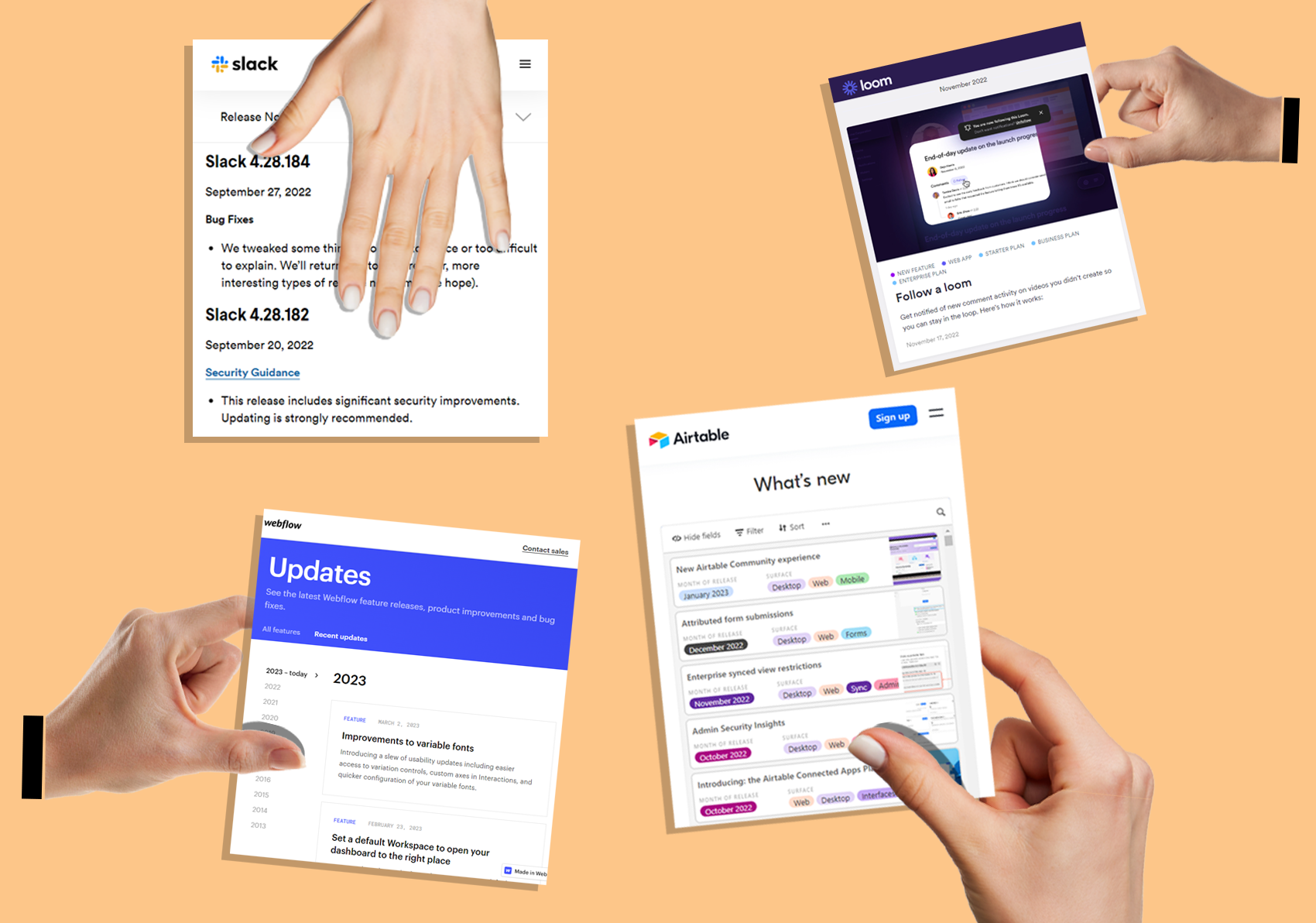
You have a dedicated development team working day and night to push new features, crush bugs, and enhance your SaaS app for users (and drink a lot of coffee, of course).
But how do you let your users know about all these awesome updates and all the value they’re gonna add to their lives?
The answer is release notes – a product marketing component many teams underutilize. Now you may ask, “how could my team use release notes in the best way possible?”
To answer this question, we’ll show you how the top SaaS teams utilize release notes so you can write yours like a pro (psst, there’s a handy checklist for ya at the end.)
10 B2B SaaS Release Notes Examples
These companies all do release notes in their own way – but they’re all nailing it. Let’s take a look at how they do it and what you can learn from them.
Index
1. Airtable
2. Slack
3. Webflow
4. Loom
5. Mural
6. Notion
7. Stripe
8. ClickUp
9. Teamwork
10. Linear
1. Airtable
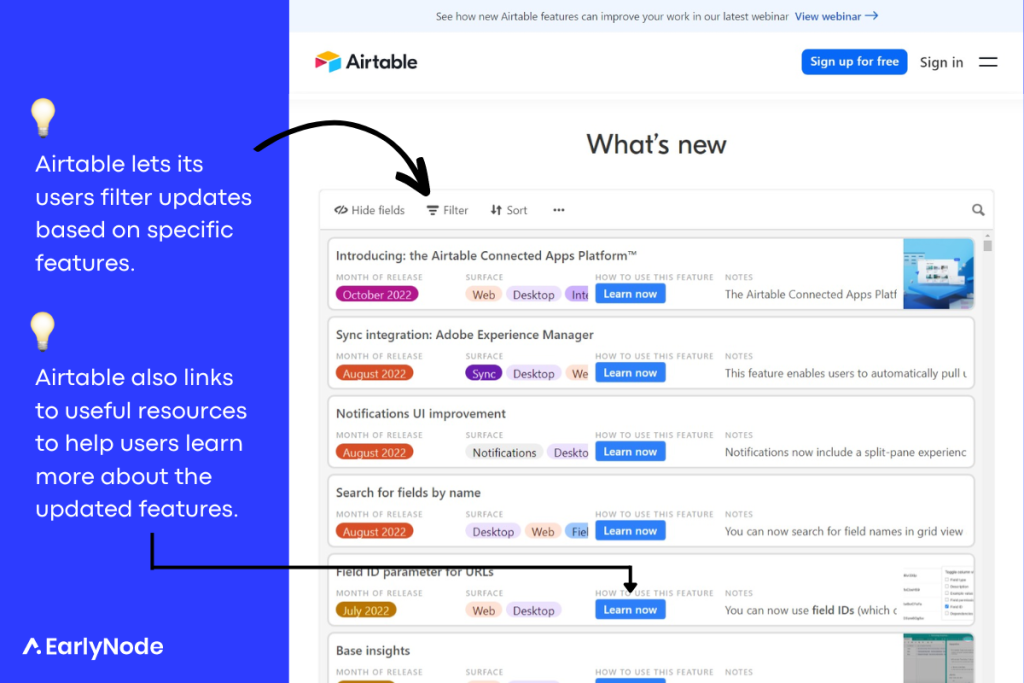
Airtable is a tool for creating and sharing databases among teams and businesses.
They use a barebone release note structure, providing in-depth details of what’s new or changed.
If any brand knows how to use its own product to create public-facing content, it’s Airtable. They created a database using their own platform to present the release notes to their users.
Key Lessons
🔎 Make it filterable: Airtable lets its users filter their product updates based on the features and release dates, making it easier for users to read updates relevant to their work.
🤓 Cater to the nerds: The best thing about Airtable’s release notes is that they give users a quick way to get more info on all the new features with a ”Learn More” button leading to an educational blog post in every one of their updates.
2. Slack
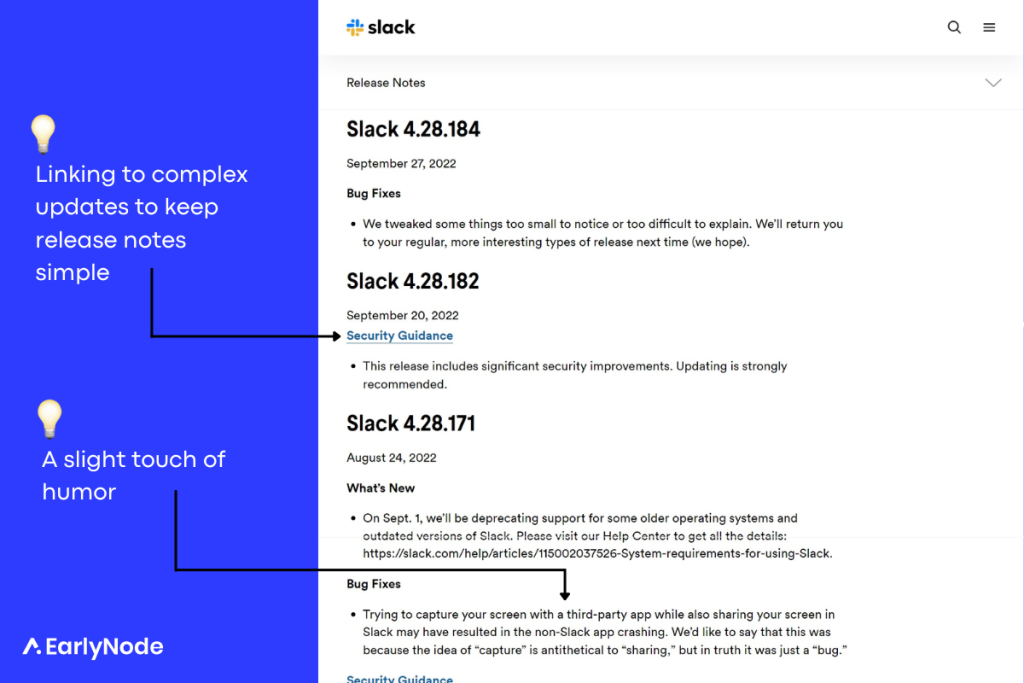
This is Slack’s motto: simpler, pleasant, and productive. And they follow that motto even in their release notes. Slack actively releases notes explaining improvements since the last update, how users can benefit, and more.
Key Lessons
🏷️ Stay on brand: Slack’s brand is cool and easygoing, so it makes sense that their release notes are very conversational. They don’t hesitate to throw in a joke or two to make their users smile.
💋 Keep it simple stupid: Slack’s changelog posts are simple and easy to understand. They don’t go on about explaining every technical aspect of the new update in their release notes. But if you are a technical person, you can access a more thorough article on the topic via a well-placed link.
3. Webflow
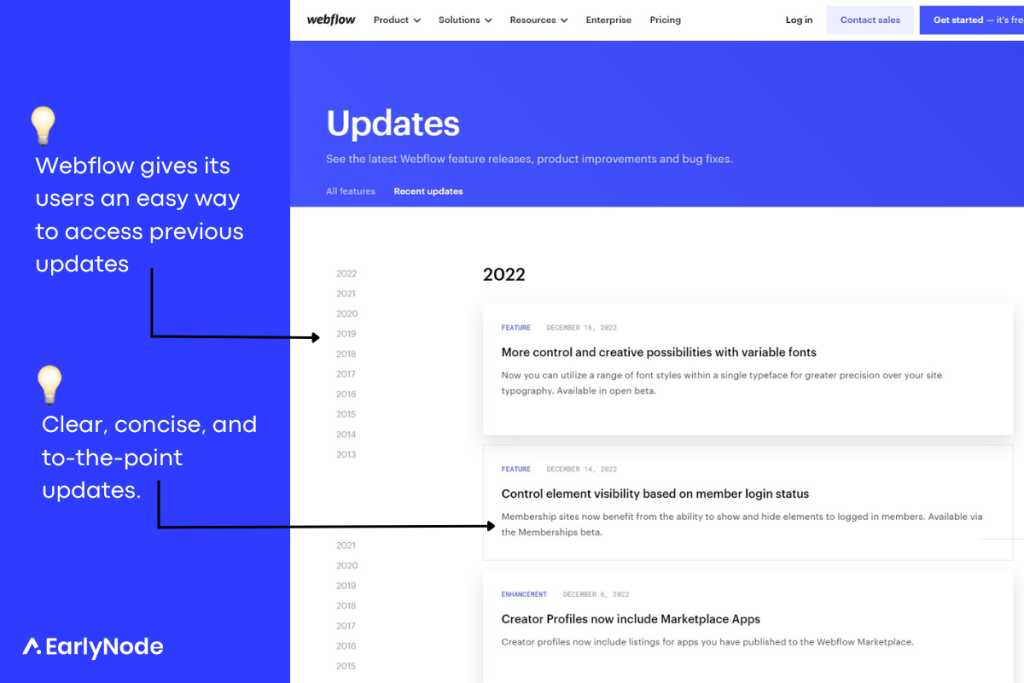
Known for its powerful web-design tools, Webflow goes simple in its release notes section. Their release notes page is also designed with their own tool, like Airtable. A user can read the full update by clicking on the summarized update.
Key Lessons
📣 Shout the benefits: Webflow makes their customers feel valuable by describing what new features can do for them. Their release notes are specific and benefit-focused.
🤓 Cater to the nerds: Clicking on an update is just one way to discover all the details and technicalities. Webflow also provides a link to their famous Webflow University to help you learn more about new features. You can also access related feature updates and enhancements.
4. Loom
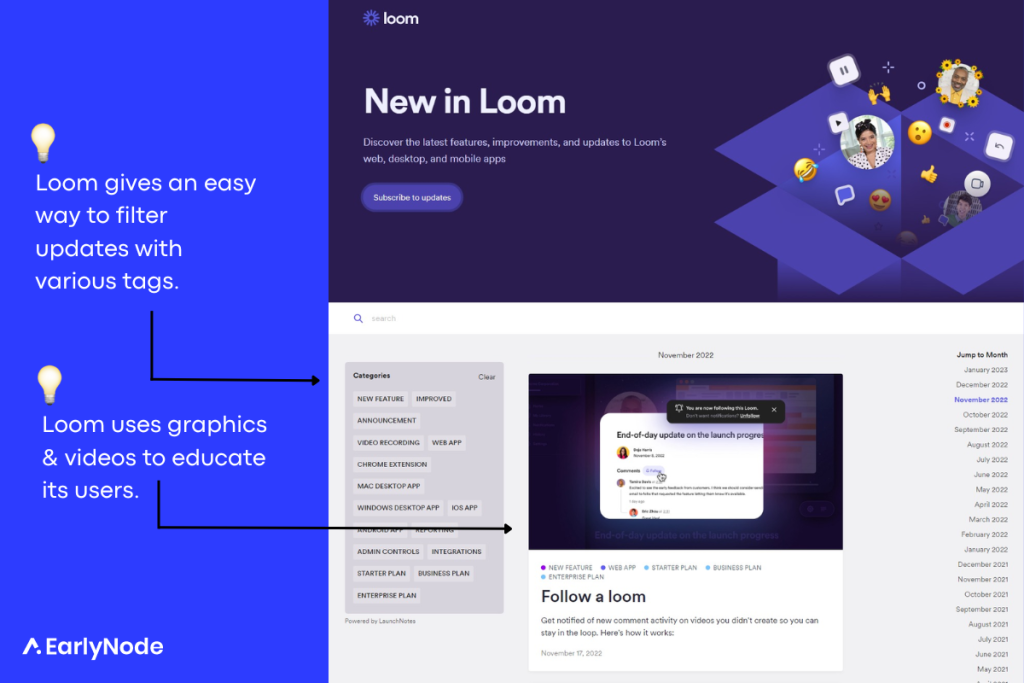
Loom release logs start with a catchy and straightforward headline followed by either an explanatory video or a graphic. This makes Loom’s release notes unique and easy to consume.
Key Lessons
🔎 Make it filterable: Loom allows you to filter updates based on the pricing plan, device, and even the month the update was made so that you can check out stuff from their archive.
👀 Go visual: You wanna learn how to use a new feature? Loom attaches an explanatory video or graphic with each update. This is a pretty cool way to get users engaged and using new features to their full extent.
❄️ Go custom: Loom also tells users how they’ll be impacted by updates based on their plan and device.
5. Mural
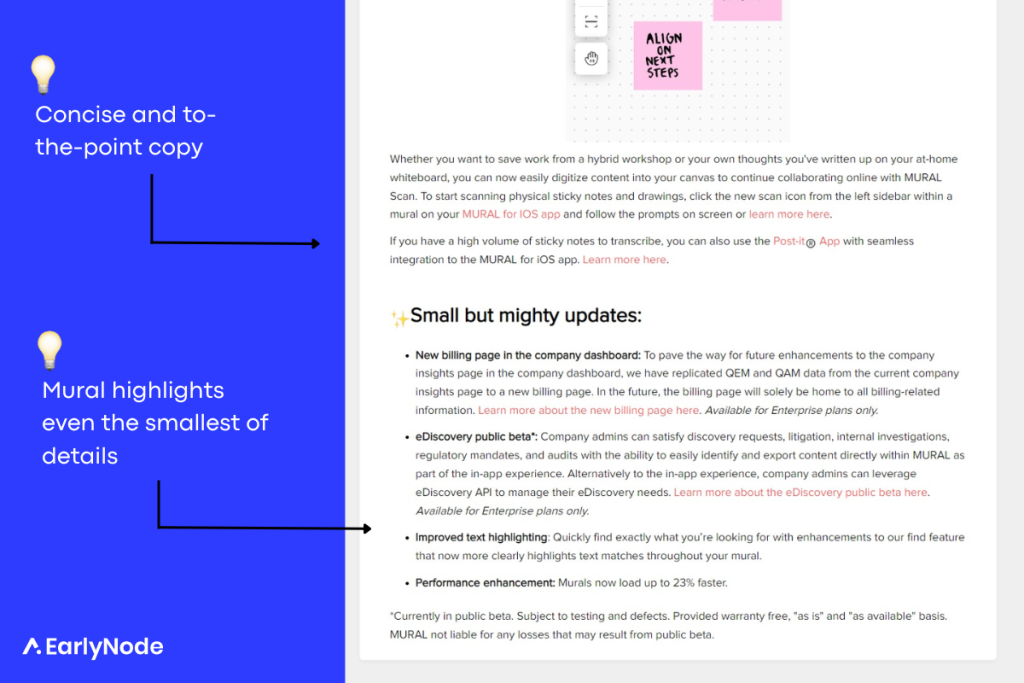
Mural goes one step further. While keeping their release notes quick and concise, they give users some extra bits of information.
Key Lessons
🧑💻 Show how hard you’re working: While it’s common to ditch any and all bug fixes into a single “bug fixes” line, Mural details each fix one by one. They want their users to see the scope and detail of every little improvement and view them as constant progress.
📚 Make it readable: The copywriting is on another level in Mural’s release logs. They keep their notes as human as possible by addressing their customers with the word “you” in almost every line. Their release notes are easily skimmable with no clustered or long paragraphs.
6. Notion
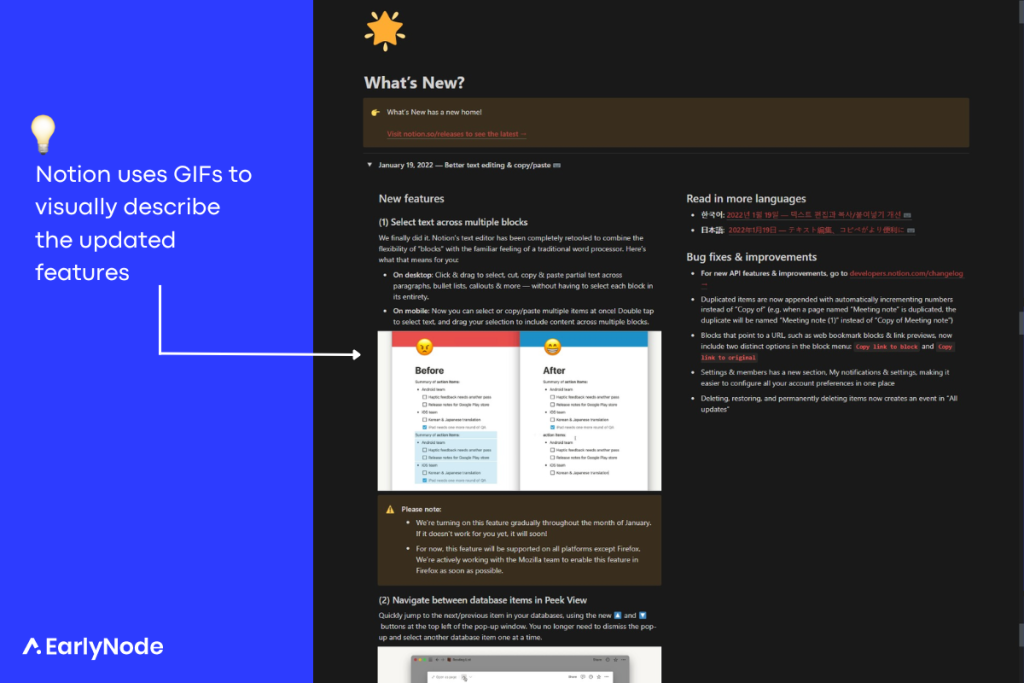
Notion’s another example of a team using their own product to create release notes. Notion also uses images and GIFs in a creative way to illustrate the new features.
Key Lessons
🫧 Keep it clear: Notion’s customer-first mentality is visible in their clear and concise release notes. They elaborate on every point clearly and try to be as descriptive as possible with as few words as possible.
💎 Be creative: Short GIFs are used to demonstrate new updates in a creative, engaging, and informative way.
7. Stripe
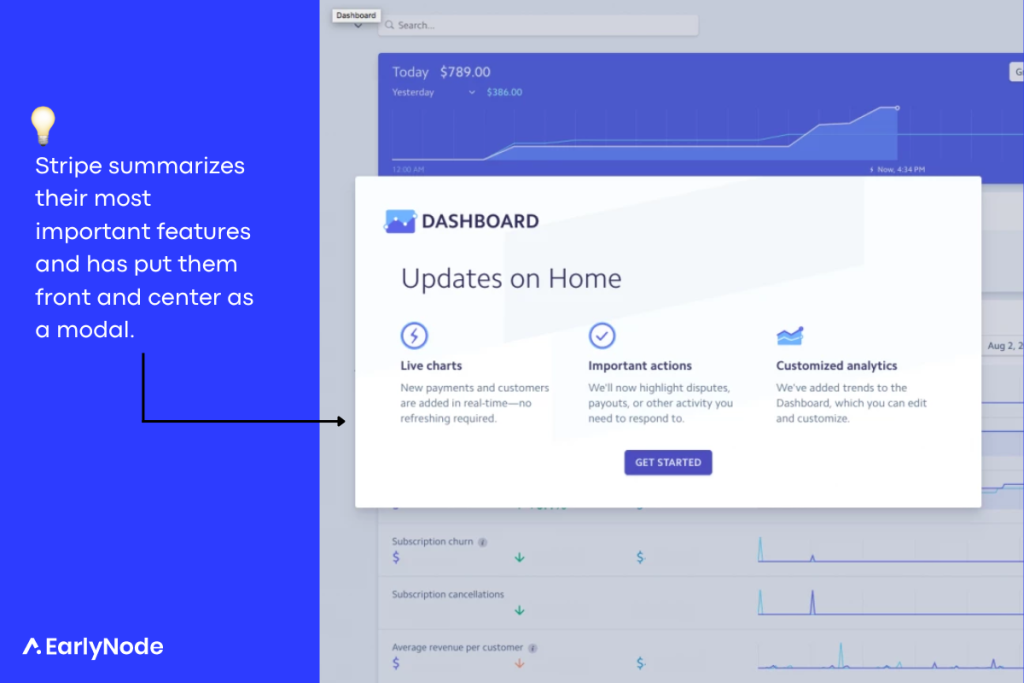
Stripe’s team shows off their copywriting skills in the shortest of the release notes we’ve seen. Getting info across in fewer words tends to be way harder than using a rambling wall of text, and Stripe nails it.
Key Lessons
📢 Go multi-channel: Alongside a standalone release notes page, Stripe summarizes their new updates into a modal which is placed in the center of the updated page or feature. This makes it easier for users to get to know about new improvements.
💬 Engage constantly: Stripe keeps its users updated by covering every little update, even if it’s just a single bug fix.
8. ClickUp
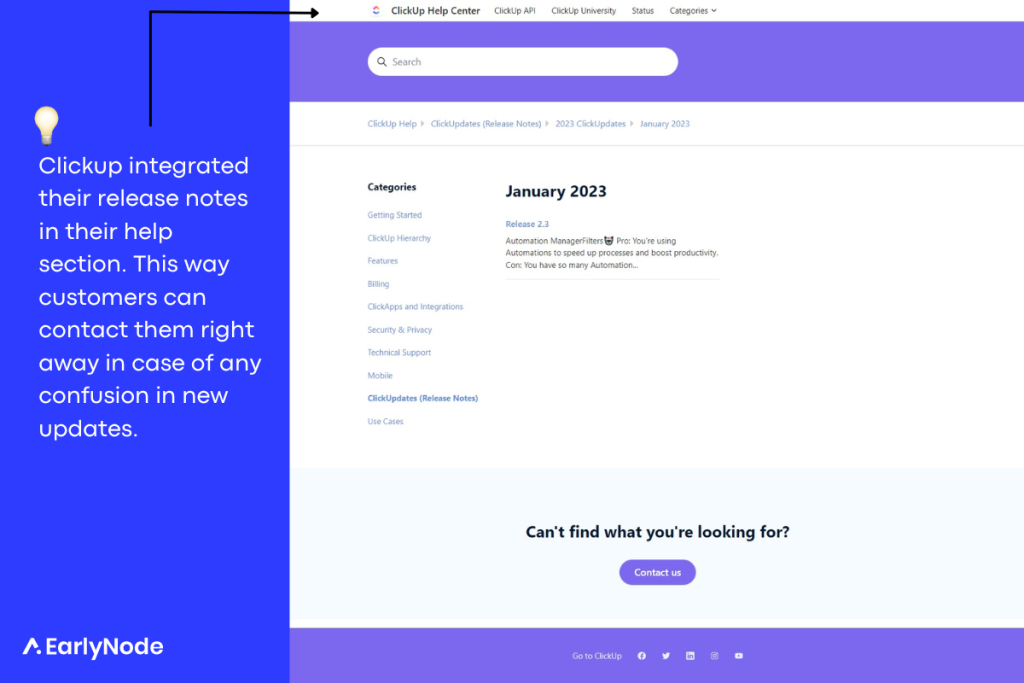
The folks at ClickUp have a fun name for their release notes: ClickUpdates. These are part of ClickUp’s help page and act as a standalone notes page.
Key Lessons
🔎 Make it filterable: ClickUpdates are sorted by year and month making it easier for people to access past updates.
🤓 Cater to the nerds: Their release notes are comprehensive and cover all aspects of development. They also provide links to helpful articles within the notes.
9. TeamWork
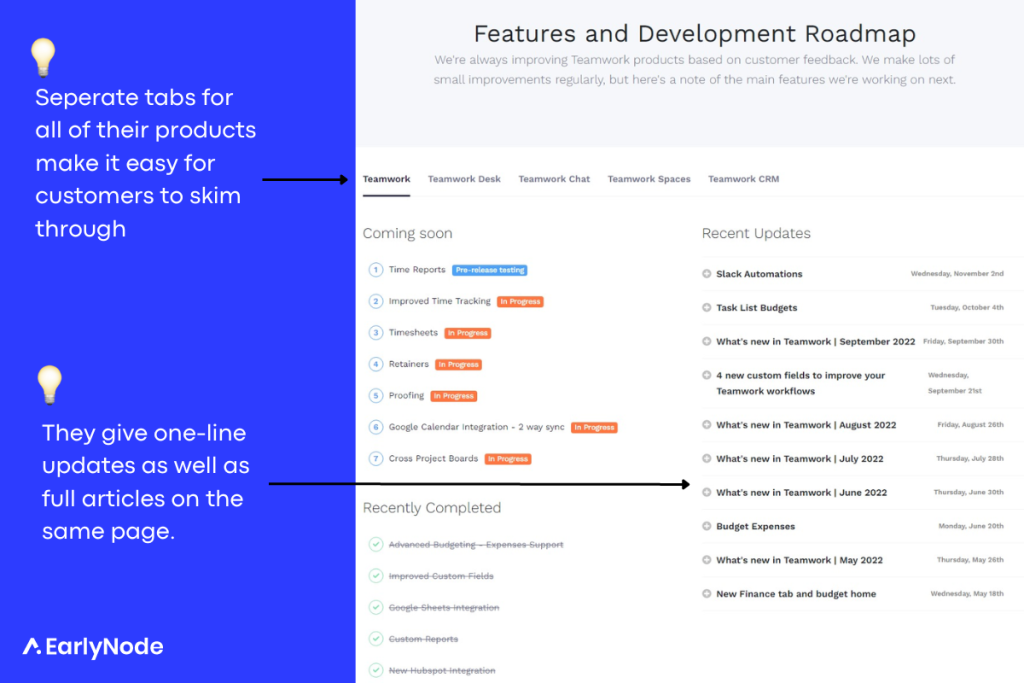
As a project management platform, TeamWork shows people how they improve their products based on customer feedback. They offer many different products, but they make it effortless for users of each product to find the relevant release notes on a single page.
Key Lessons
💥 Build hype: Putting recent updates and future product roadmaps on one page is tough to pull off. Users can mistake the roadmap for updates, but TeamWork impresses with how they deliver this page and excite their users about the upcoming releases.
🧹Keep it tidy: Tabbed categories help visitors easily navigate across the product family.
10. Linear

Linear, a unique bug-tracking tool, tracks its own bugs pretty quickly and improves the product weekly. Now you may be thinking, “That’s too many release notes”. Not for Linear.
Key Lessons
📢 Go multi-channel: Linear makes their release notes distribution easy with their weekly release log tweet. Yes, they tweet out their minor bug fixes and keep users engaged on both their website and social channels.
🥷 Sneaky marketing: Linear also promotes its product through release notes. They make sure not to make it look cheesy and salesy, and they do it very, very well.
A 5-question checklist to write impactful release notes
Okay, so you’ve learned by example, but we wanted to ensure you have all the actionable advice you need to write informative, engaging release notes (we’ve always got you covered).
So, here are 5 key learnings from the examples above in the form of a super-handy checklist:
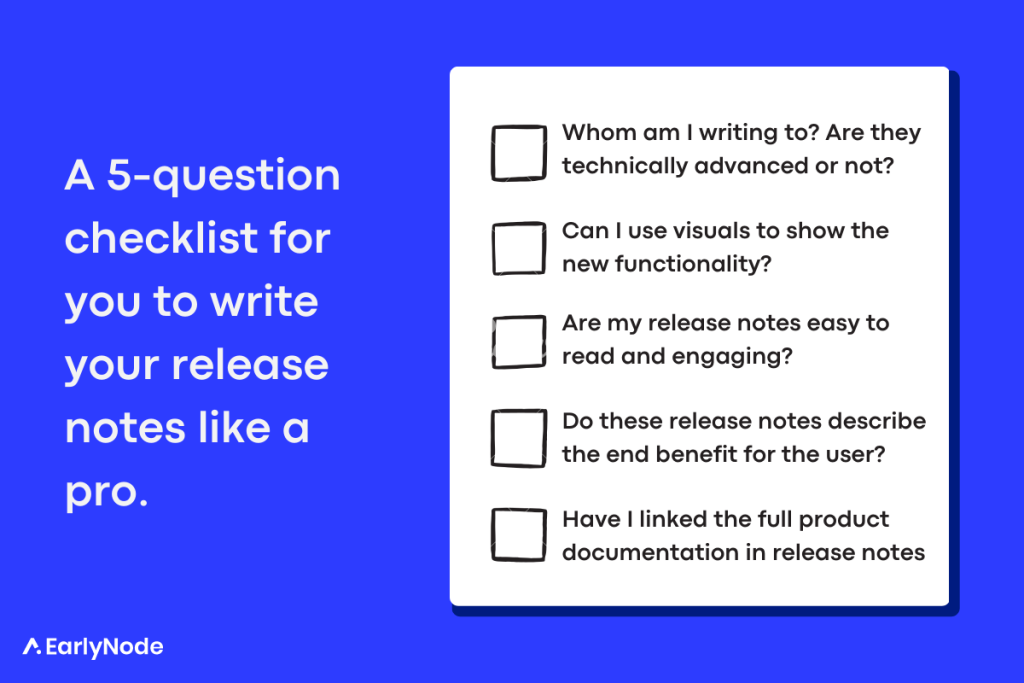
1. Know your audience
If your product is used by developers, there’s no need to remove all the technical aspects from release notes. In fact, they’d probably prefer you leave them in!
But if your users do not have a technical background, you must focus on writing release notes they can understand and benefit from. You have to know what your audience demands. Do they like to know the nitty-gritty details, or are they fine with single-line updates?
2. Visual design matters
Remember, a picture is worth a thousand words. Release notes are more engaging when you include visual elements.
That is why many companies are now using creative designs instead of walls of text to show how their update benefit customers. You can include custom images, videos, and even GIFs in your release notes.
3. Stick with your brand
While some companies have started using release notes as an expression of creativity and comedy, that might not be an entirely risk-free approach.
If you have a serious brand overall, it might not be wise to use a witty tone in your release notes.
4. Link to the full details
In the above examples, almost all of the companies provided their customers with a link to detailed articles about the updates outlined in their release notes.
Doing so lets you keep your release notes concise, providing the most important info in a digestible format for the average user while still making all the nitty gritty details available to those who want a deeper dive. That way, you keep everybody happy.
5. Distribution is key
It’s a smart idea to test out different distribution channels for your release notes. Try sending update emails, creating modals like Stripe, or using social media like Linear to show off your cool new features.
Find a medium that works the best for you and your customers. It should be easy for your customers to follow the updates and even easier for you to keep them in the loop.
Final Thoughts
In the end, release notes are subjective to your audience, your product, and your own brand. Some people want in-depth technical info in release notes, and some just want to be entertained.
Either way, they’re important for brand building, re-engaging inactive users, and increasing product adoption.
So, getting the right style and balance for your release notes is up to you. But as long as your release notes provide meaningful and informative content in an engaging way – they’re worth the time and effort.



